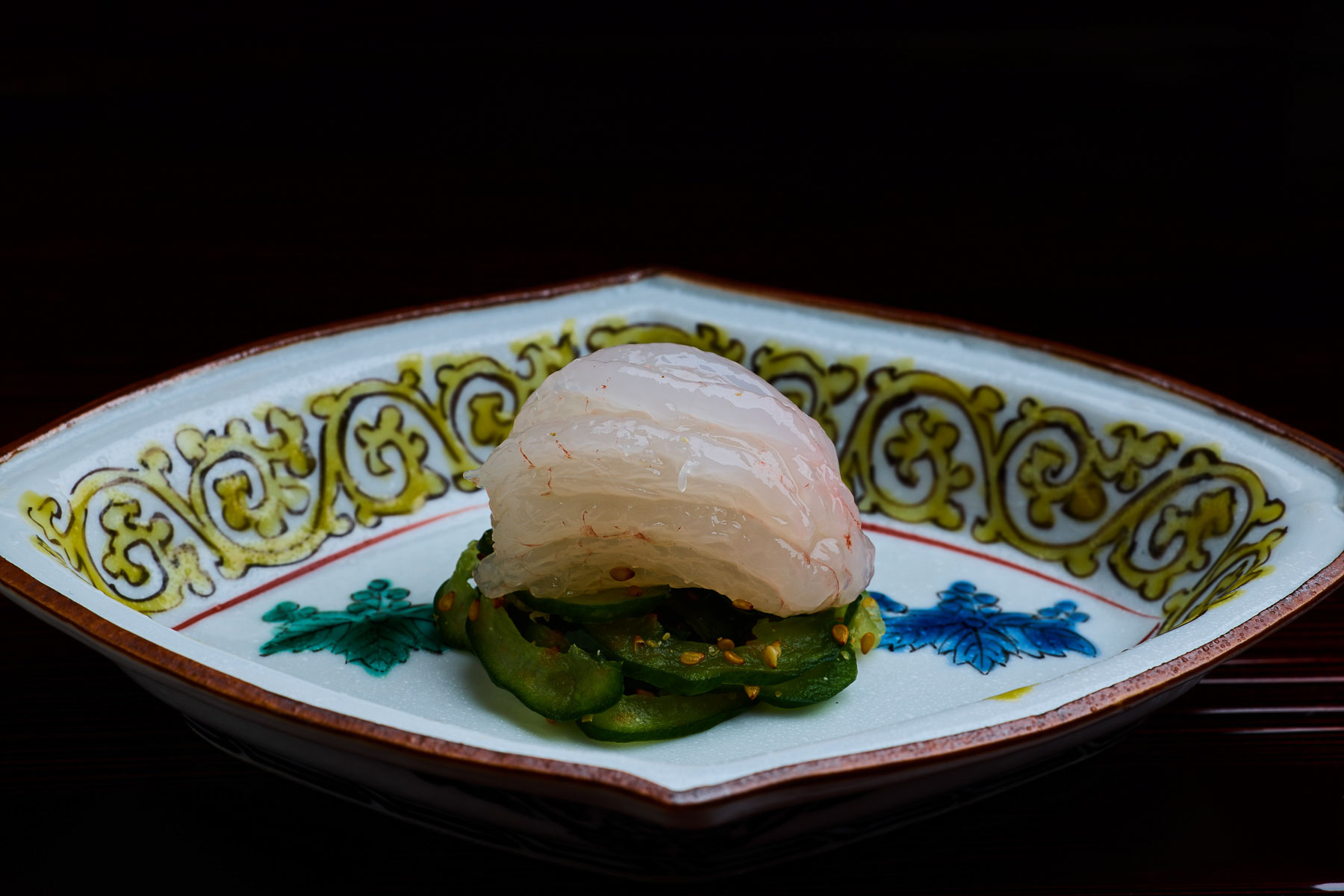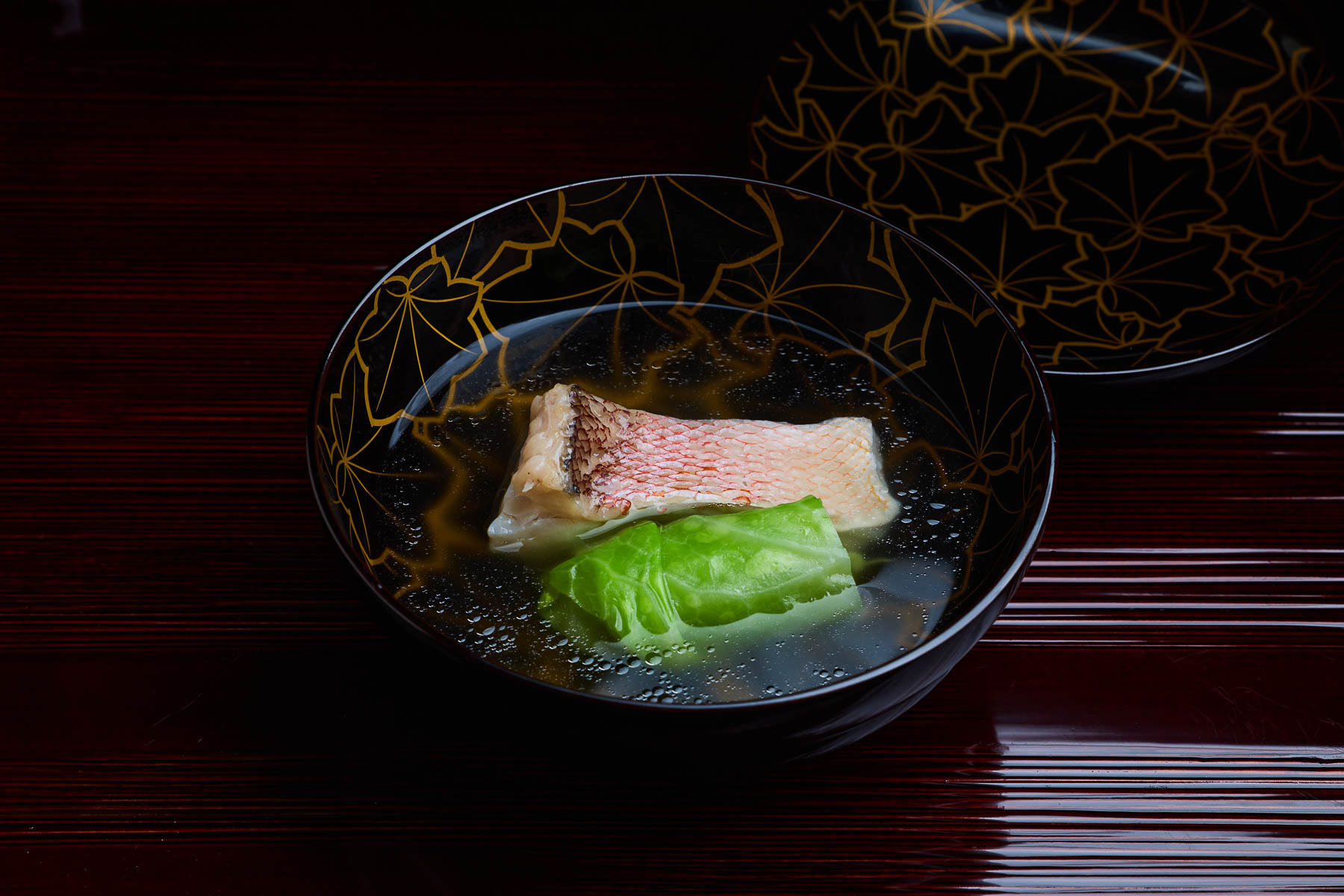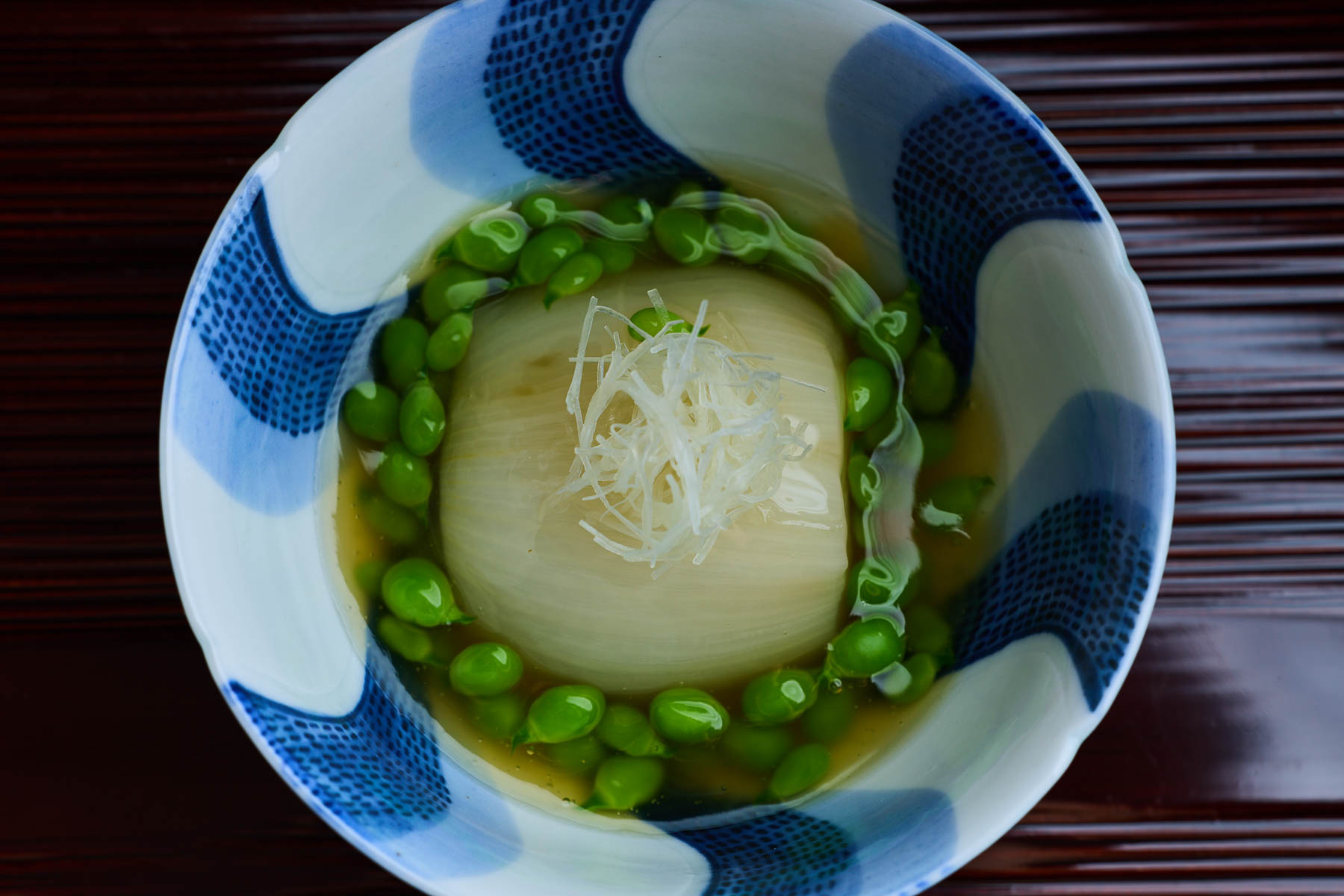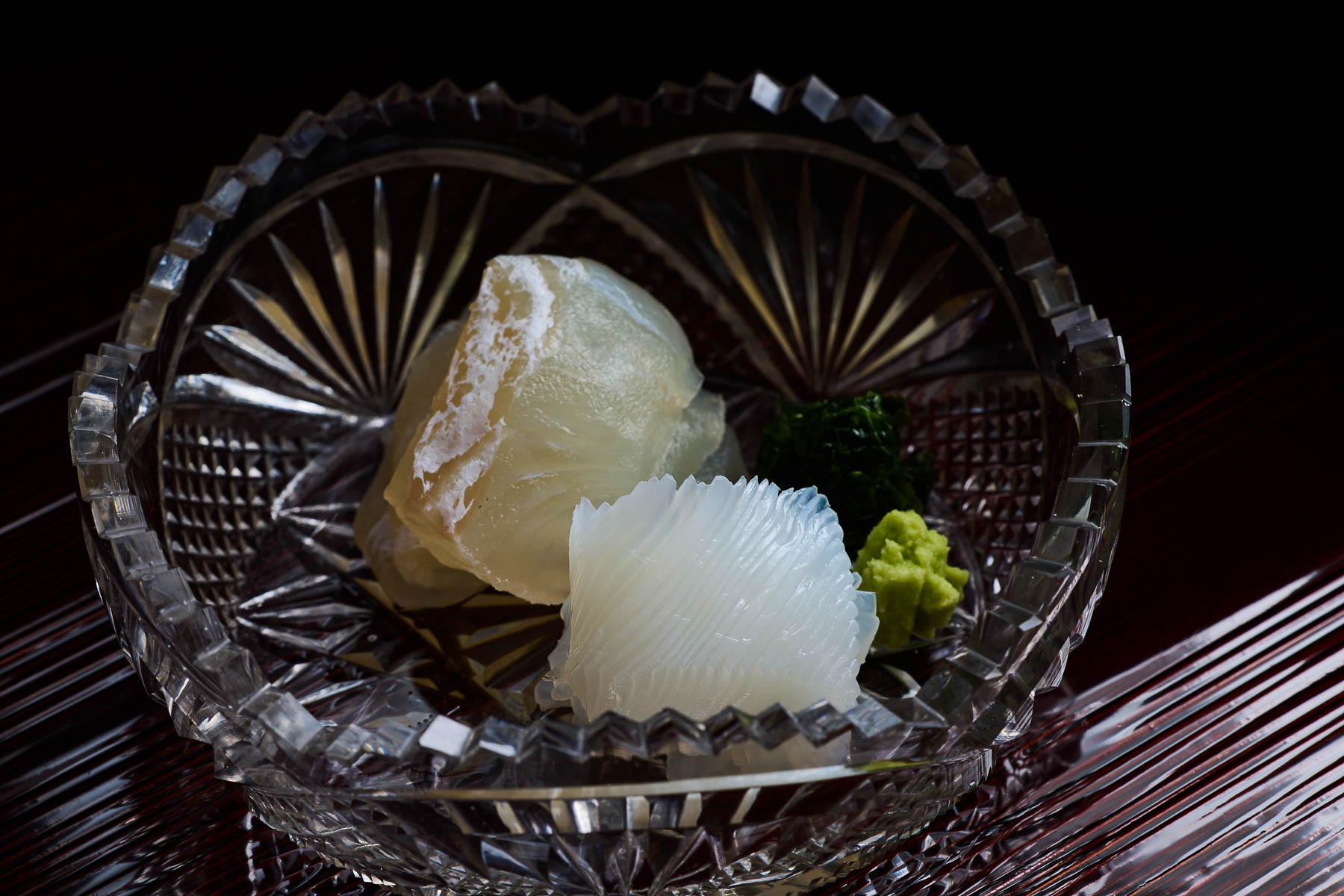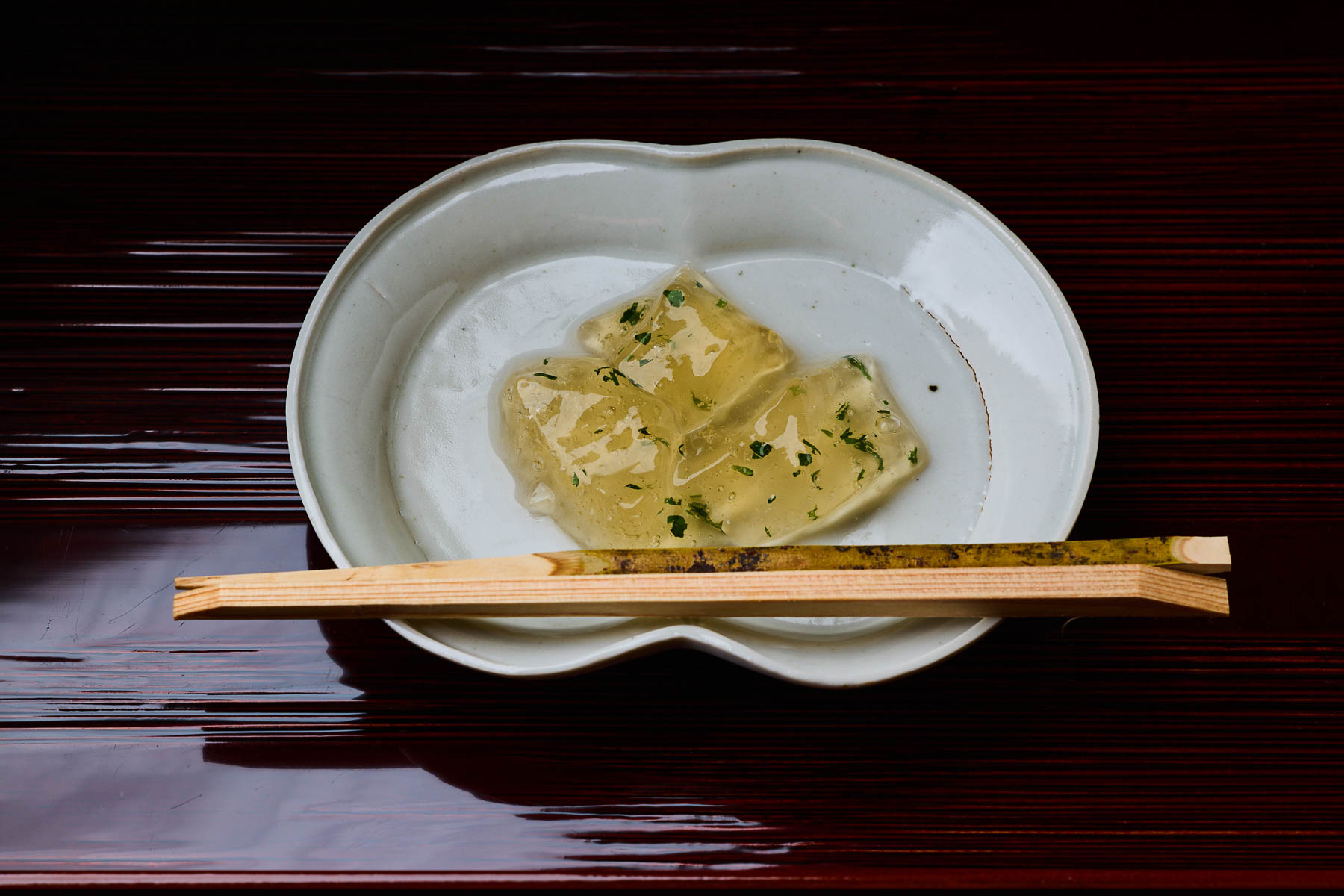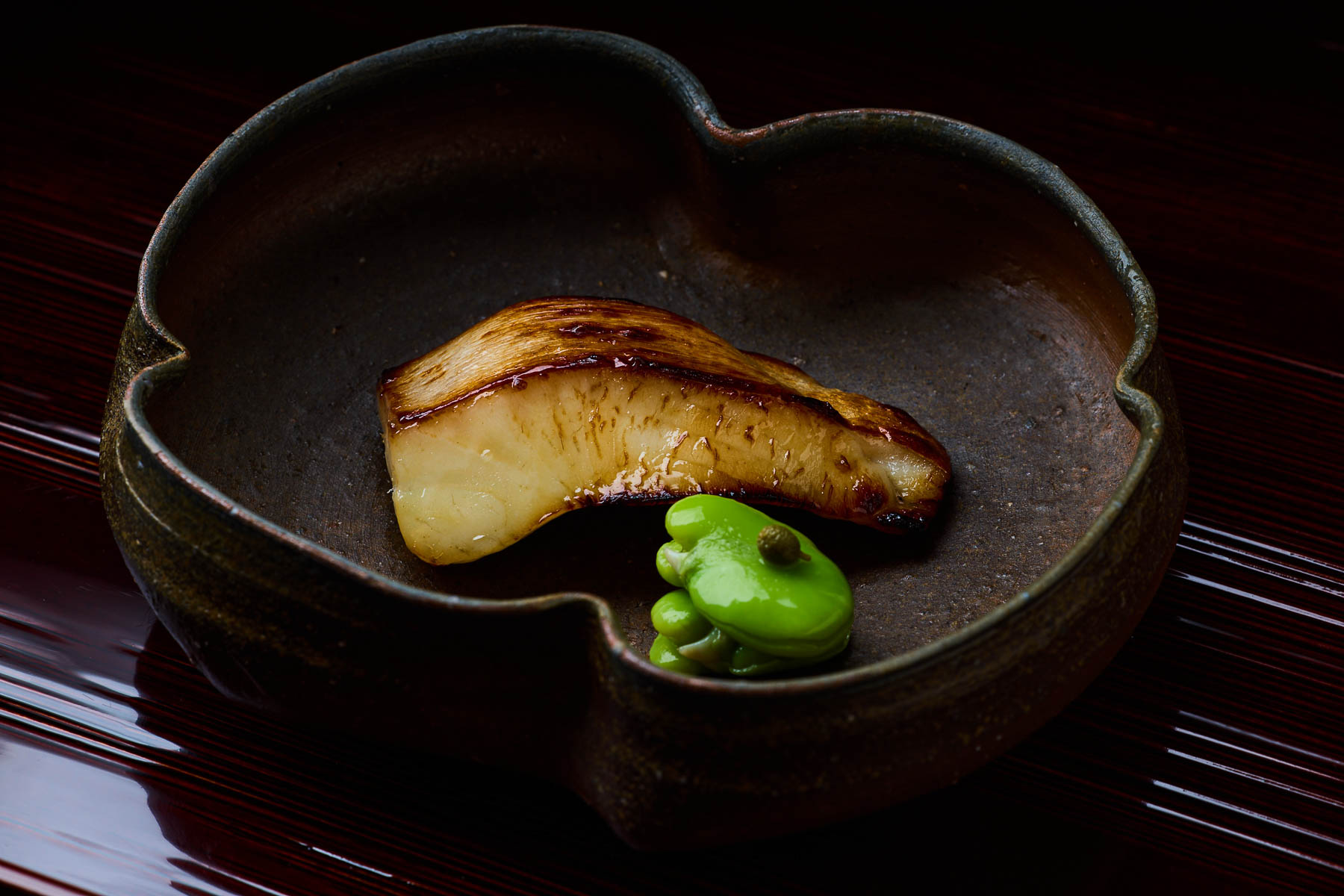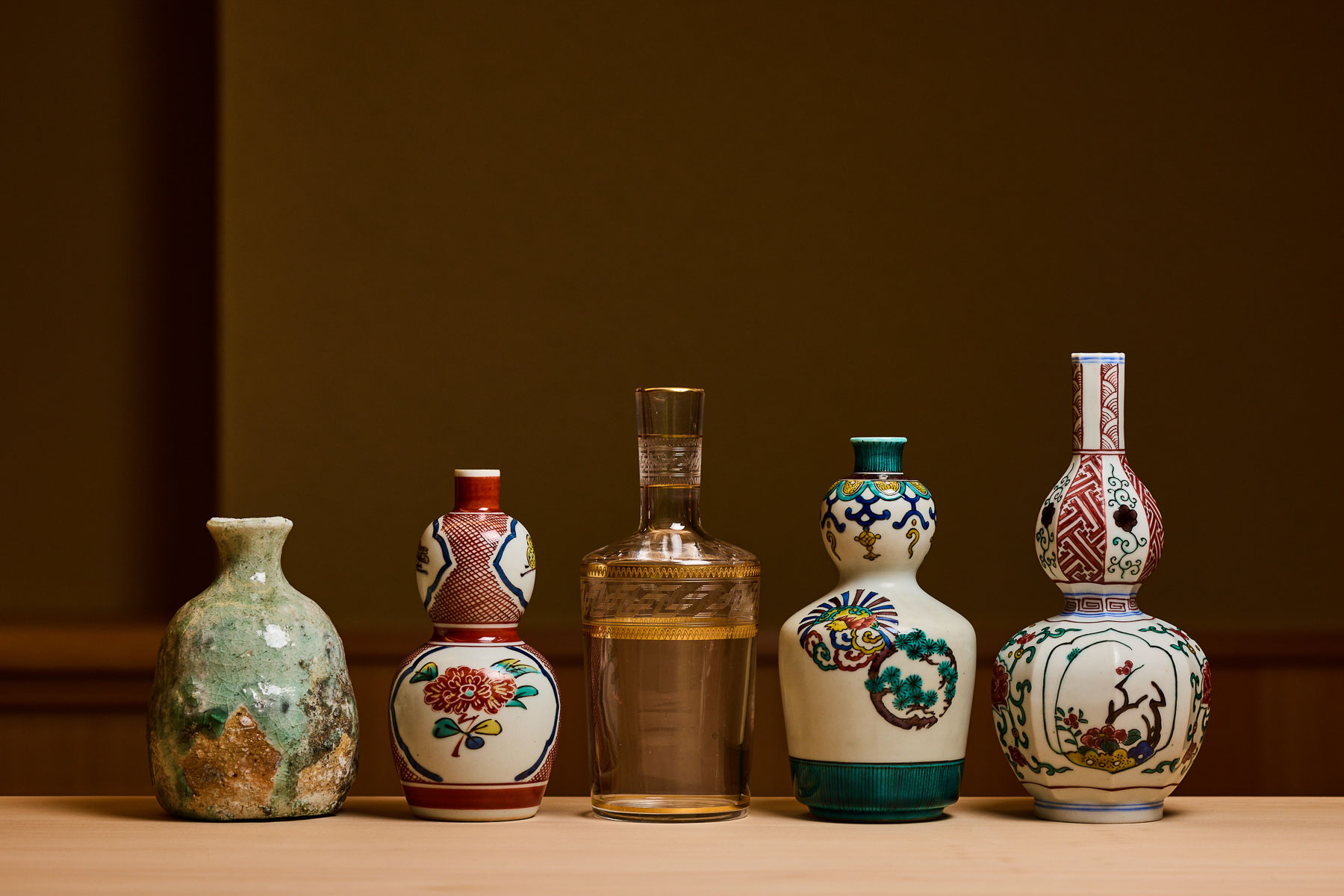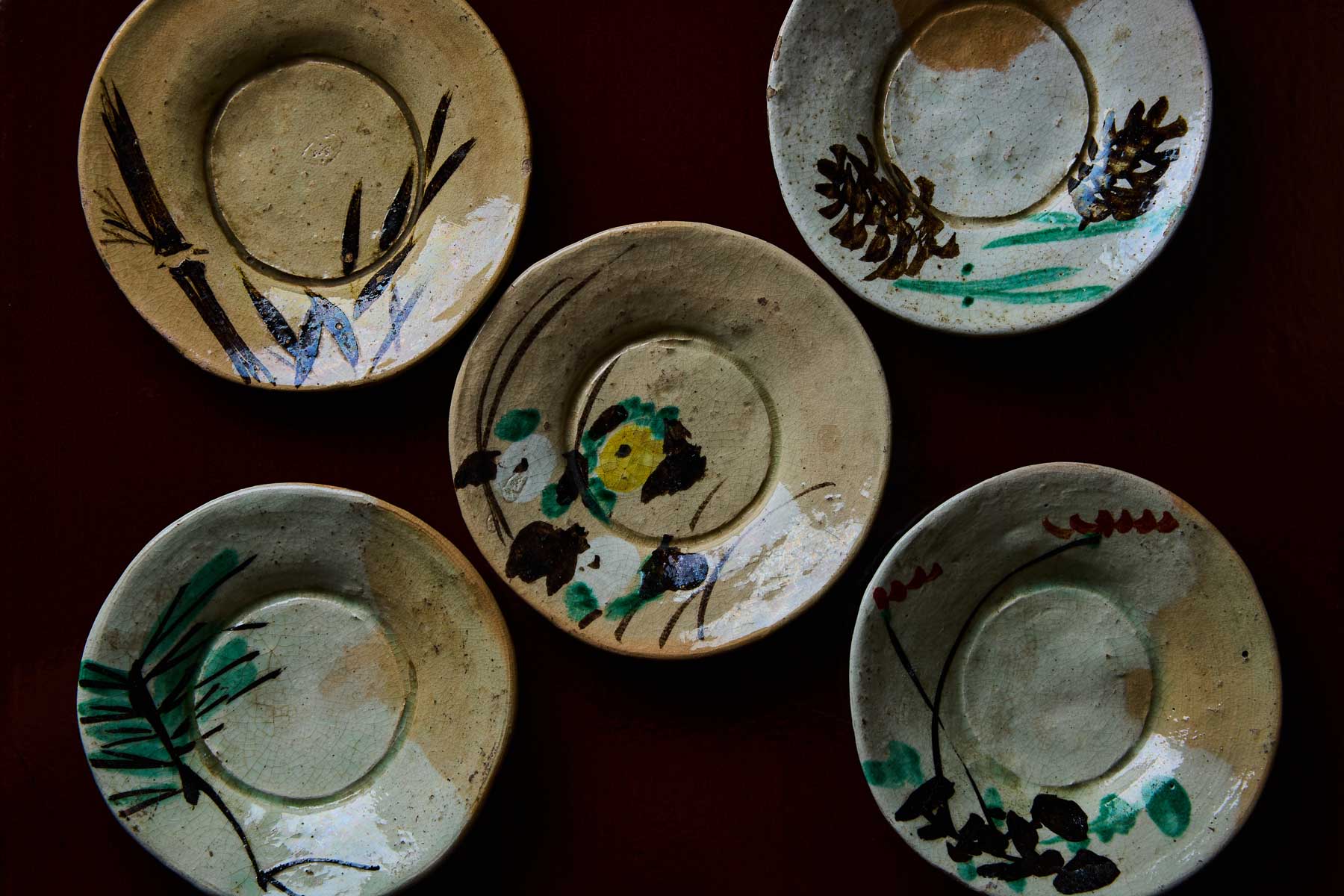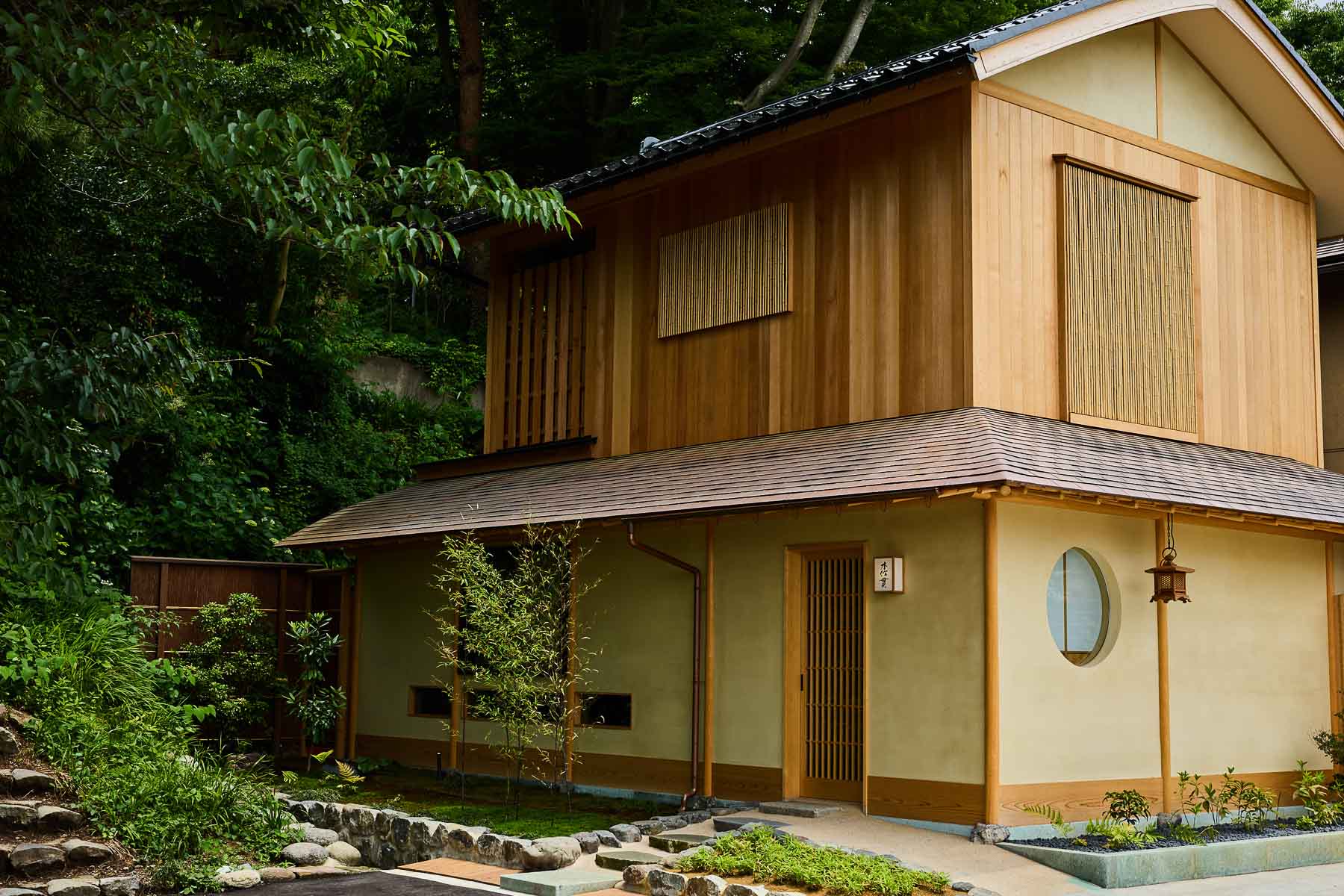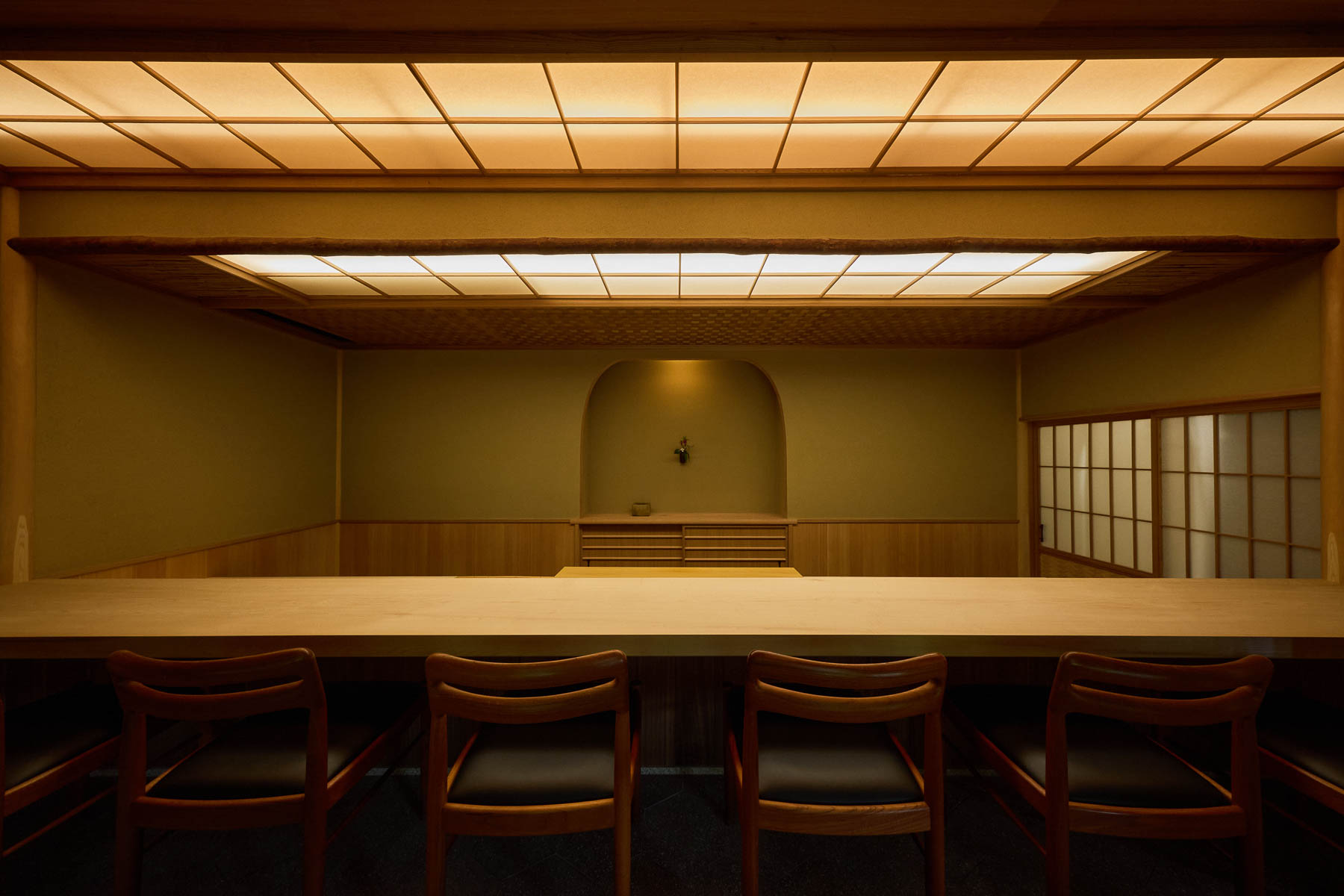
Ishikawa
Kisanuki
木佐貫
Tucked along the picturesque Asano River, Kisanuki offers an intimate omakase experience rooted in Kanazawa’s rich culinary heritage. Opened in April 2025, it marks the debut of Nobuo Kisanuki, who trained at two of Japan’s most respected kaiseki restaurants: Kagurazaka Ishikawa and Kataori. Built on his deep affection for the region, his seasonal meal centers on pristine seafood, mountain herbs and local produce. Though still in its first year, Kisanuki has already become one of Kanazawa’s most sought-after reservations.
About a 15-minute car ride from Kanazawa Station, Kisanuki is located inside an elegant Japanese house, newly built by the same carpenter who designed Kataori. A cherry tree stands next to its entrance, with stone steps from the Edo period leading to the nearby Toyokuni Shrine, offering a beautiful surrounding ambiance. A small umbrella by the door, ready for rainy days, offers a thoughtful touch, typical of the region’s culture of hospitality.
Inside, the atmosphere is warm and inviting, surrounding the spacious counter that seats five to six guests. The countertop is made from Ate wood, the prefectural tree of Ishikawa. The floor is paved with locally quarried Tomuro stone in a hexagonal pattern, while stained glass set into the shoji screens references regional traditions. Wild plants, picked by Kisanuki himself on morning market runs, appear throughout the space. A deep feeling of welcome is felt throughout.
CUISINE
Rooted in Kanazawa’s rich culinary heritage
Kisanuki’s cuisine reflects his affection for the rich bounties of the Hokuriku region. The style is elegant and restrained, allowing the clean flavors of each ingredient to emerge. While the style follows Kataori’s approach, Kisanuki’s own voice comes through in his focus on local produce and seafood. As he explains, “I fell in love with the ingredients, so I decided to go independent here.”
The omakase opens with a white shrimp appetizer. The fresh hand-peeled shrimp from Toyama is paired with thinly sliced cucumber tossed in golden sesame seeds. The soup course features sweet red snapper from Shinminato, also in Toyama, served in a clear broth with fresh spring cabbage. The cabbage adds delicate sweetness and pleasant texture.
The vegetable course highlights Kisanuki’s careful attention to preparation. Local onions are grilled slowly for an hour to concentrate their sweetness, while snap peas, also locally grown, are paired with fresh ginger for a bright contrast. Next, the grilled dish arrives: fatty silver pomfret, gently cooked over charcoal in a soft yuan-yaki style. The fish is served with fava beans simmered with a touch of Japanese pepper.
The sashimi course presents a selection of marbled flounder and bigfin reef squid, served alongside green nori seaweed from Suzu and freshly grated wasabi. The pairing of seaweed and squid offers both texture and depth, while the flounder’s fine marbling reflects Kisanuki’s discerning eye for quality. The light dessert is warabi mochi, flavored with kinome leaf buds. Its refreshing finish brings a satisfying end to the meal.
INGREDIENTS
Ingredient sourcing is central to Kisanuki’s culinary philosophy. He draws extensively from the Hokuriku region, applying his trained eye to select the highest quality available. The white shrimp from Toyama, for example, are hand-peeled to preserve their texture and flavor—a detail that often surprises guests used to more commercial versions. Mornings are spent at fishing ports and local markets, allowing him to work with the freshest possible catch each day.
Water is another essential element in his cooking. Each morning, Kisanuki drives to Kansui Kannonyama Reisui, located less than an hour away, to collect pristine spring water for the restaurant. The sake list also leans heavily on Hokuriku makers, including Yoshida Sake Brewery’s Tedorigawa.
While the focus remains on Hokuriku’s best produce, Kisanuki is pragmatic when sourcing beyond the region. Golden sesame seeds come from his hometown of Miyazaki, while wasabi is drawn from Shizuoka when suitable local options are unavailable.
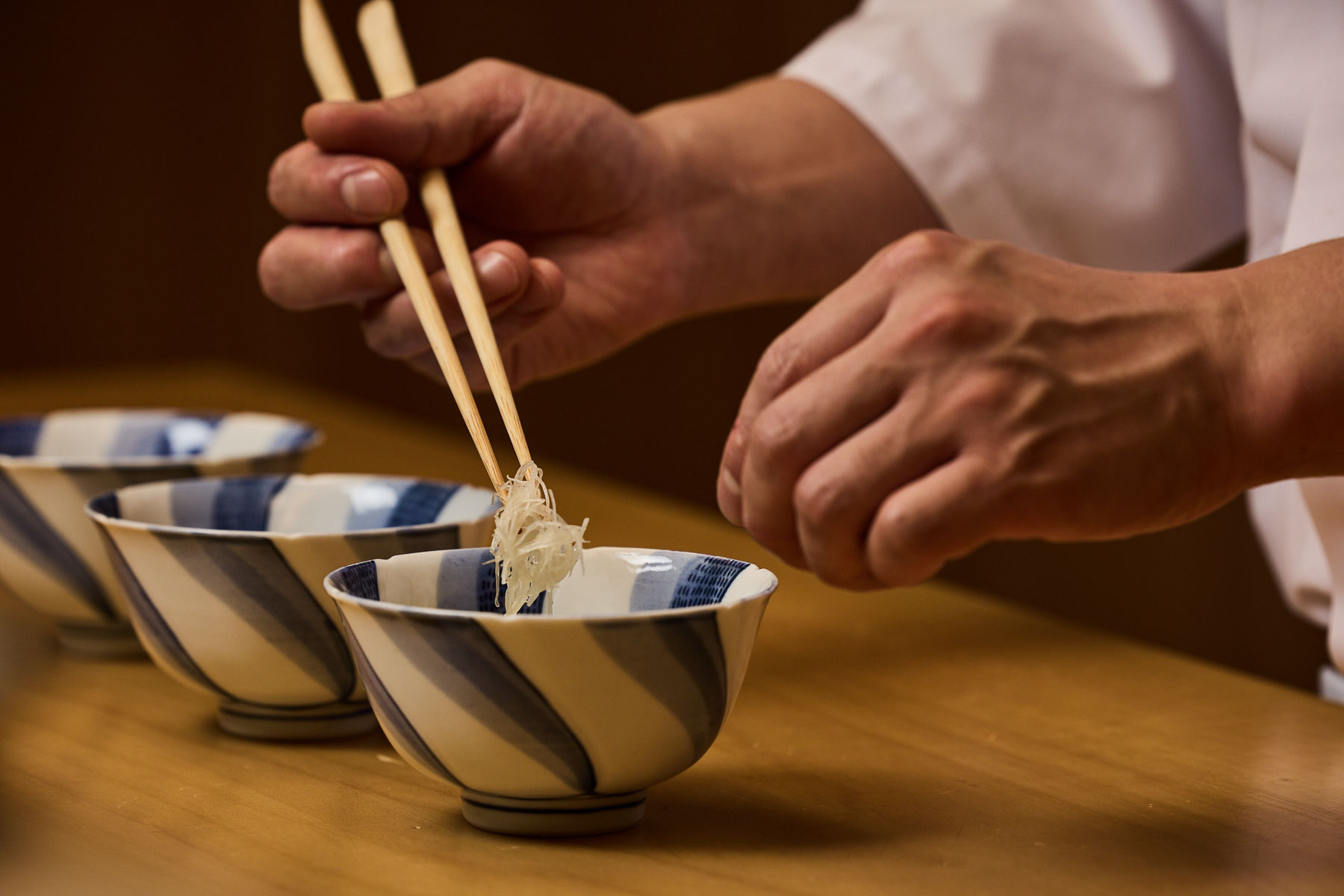
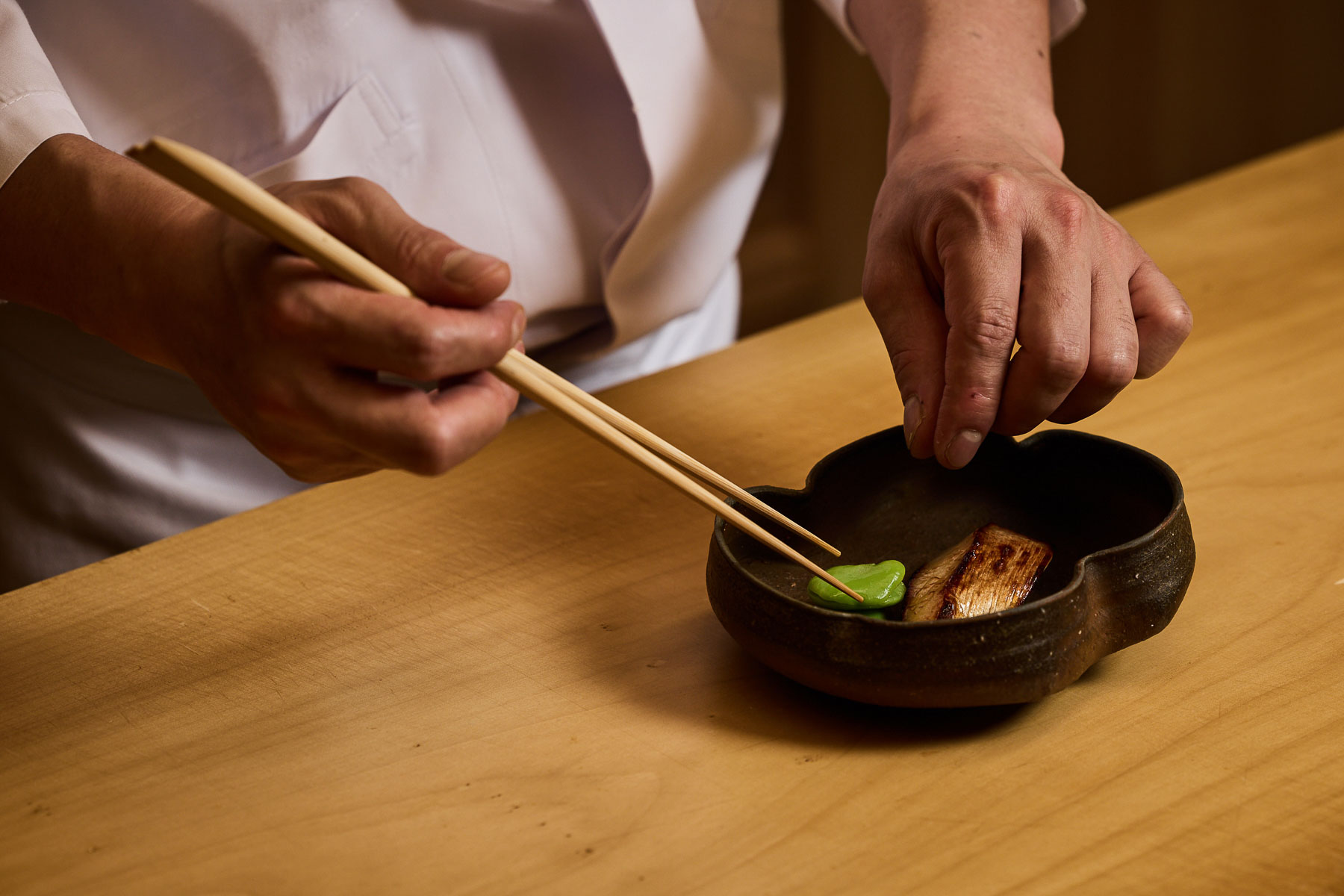
CHEF
Kosei Kisanuki
TABLEWARE
Kisanuki’s attention to detail extends beyond the kitchen and into every piece of tableware. His fascination with tableware was sparked during his time at Tsuruko, where the master chef had a particular passion for ceramics.
Today, the second floor of Kisanuki’s restaurant serves as a storage space for his growing collection, which includes a set of rare plates by Ogata Kenzan, the Edo-period potter and painter from some 400 years ago. Even the hand basins in the restrooms are made from Ohi ware, a traditional Ishikawa ceramic with centuries of history.
The collection of sakeware is also remarkable. It includes bottles crafted by Kitade Tojiro, a renowned Kutani ceramic artist; century-old pieces by Tokuda Yasokichi; and antique Baccarat glassware from the late 18th century.
Course
- The price includes our booking fee of ¥8,000
- The price includes our booking fee of ¥8,000


